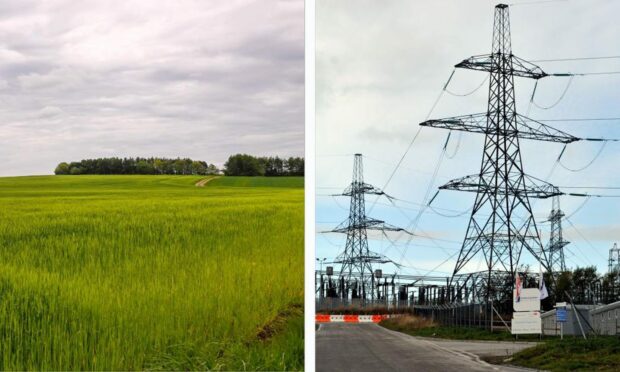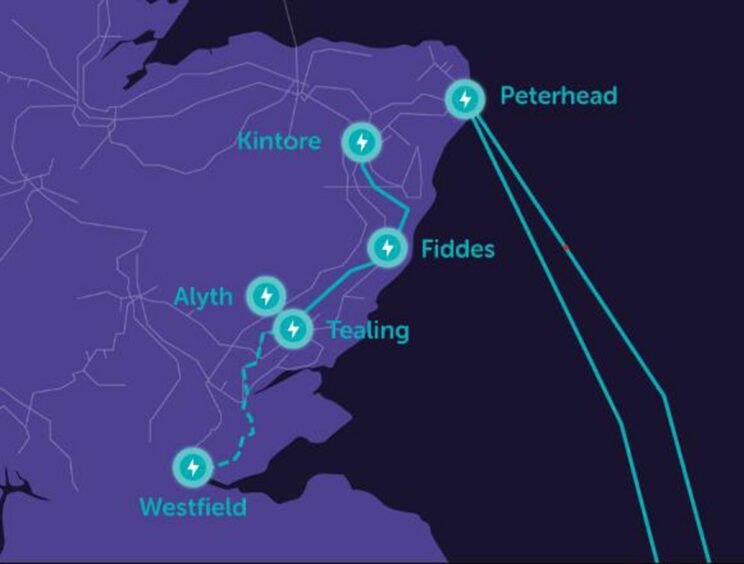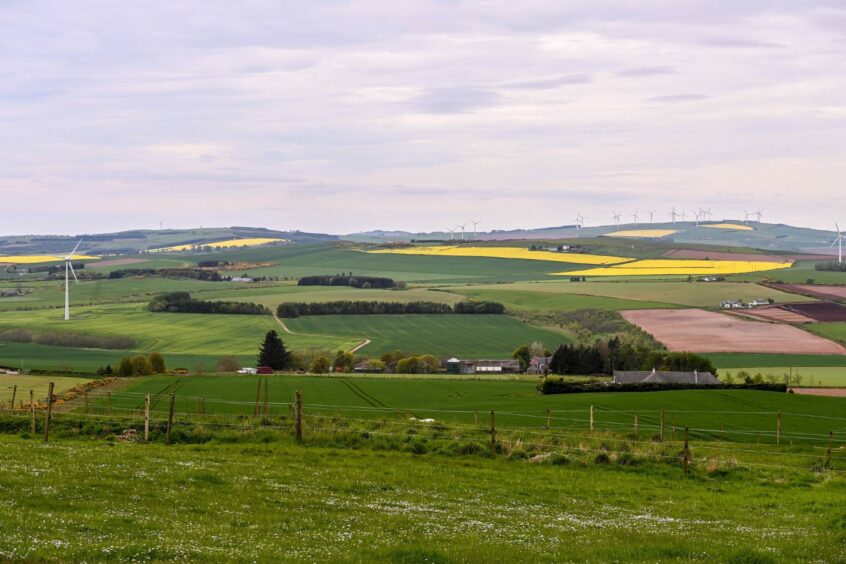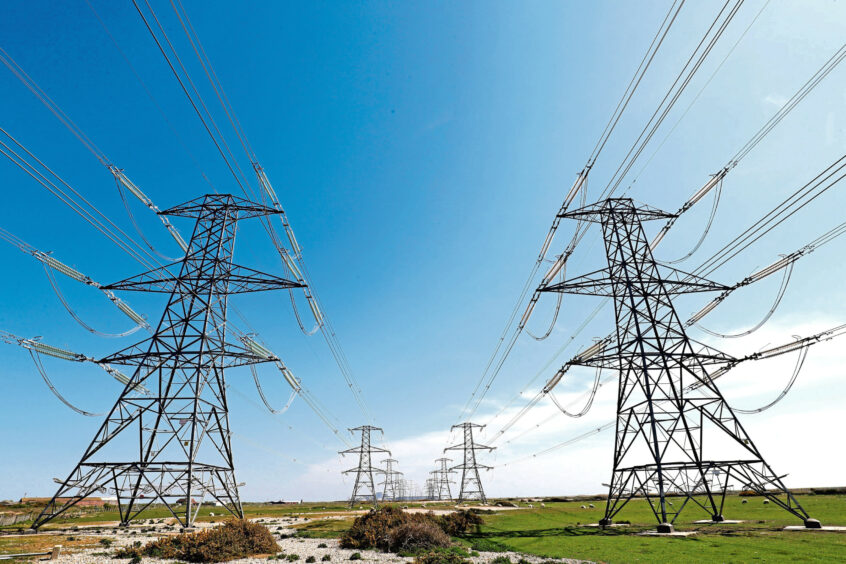SSEN has published its initial response to the public consultation over its controversial infrastructure plans in the Mearns.
The electricity giant has released a seven-page document addressing key themes which have been identified by concerned residents.
It covers the entire East Coast 400kV Phase 2 Scheme, which includes building a 188ft pylon line between Kintore, Fiddes, and Tealing.
It will run through some of Scotland’s best agricultural land in the Mearns and will involve building two of the largest substations in the UK at Fiddes and Tealing.
Opposition to the plans has been formed both in Angus and with the Save Our Mearns campaign group.
What does SSEN think about the consultation so far?
The document involves SSEN responding to a number of concerns raised in the consultation, including:
- Consultation timescales: Plans remain in the early stages of development with no specific substation sites of pylon routes identified yet.
- Project need: Proposals are necessary to meet UK 2030 renewable energy targets to fight against climate change and volatile gas market prices.
- Environmental impact: Plans will deliver a biodiversity net gain with “robust policies” in place to mitigate impacts on irreplaceable habitats.
-
- Tower heights: Although some towers will be 246ft high, “on average” the tower heights will be 188ft.
- Network planning process: Infrastructure has been identified by GB-wide National Grid Electricity System Operator as “required” and “essential”.
- Raising awareness: Distributed 11,000 leaflets, published adverts in local papers and met with councillors.
What does SSEN say about undergrounding the new cables?
A common suggestion made by many of the residents that will live near the new pylon line has been to underground the cables instead.
SSEN responded to this, writing there are “several environmental, technical, and operational constraints associated with undergrounding at extra high voltages – particularly at 400kV”.
Its concerns include:
- Undergrounding is “considerably” more expensive, both to maintain and install, and costs will be passed onto GB electricity consumers.
- Restoring power in the event of a fault can take much longer than for an overhead line.
- Due to a number of new offshore cables being proposed, there are “several reasons” why overhead lines are required alongside subsea cables.
However, campaigners have pointed out that exceptions have already been made.
Last Month, SSEN’s parent company SSE announced its operating profits had soared to £2.53bn from 1.37bn last year.
A spokeswoman for SSEN said: “Today we are sharing our initial response to some of the key themes received in the feedback so far and encourage anyone with an interest in the project to continue to share their views with us on our website.”
What happens next in the north-east consultation?
After the consultation’s extension runs out on June 23, SSEN said a detailed consultation report will be published.
It will explain “how feedback has been considered to inform the more detailed network design”.
Then the alignment options will be presented towards the end of the year.
SSEN said there will also be another round of consultation beginning at the end of the year as the plans get more refined.
The full SSEN initial response document is available on its website.



